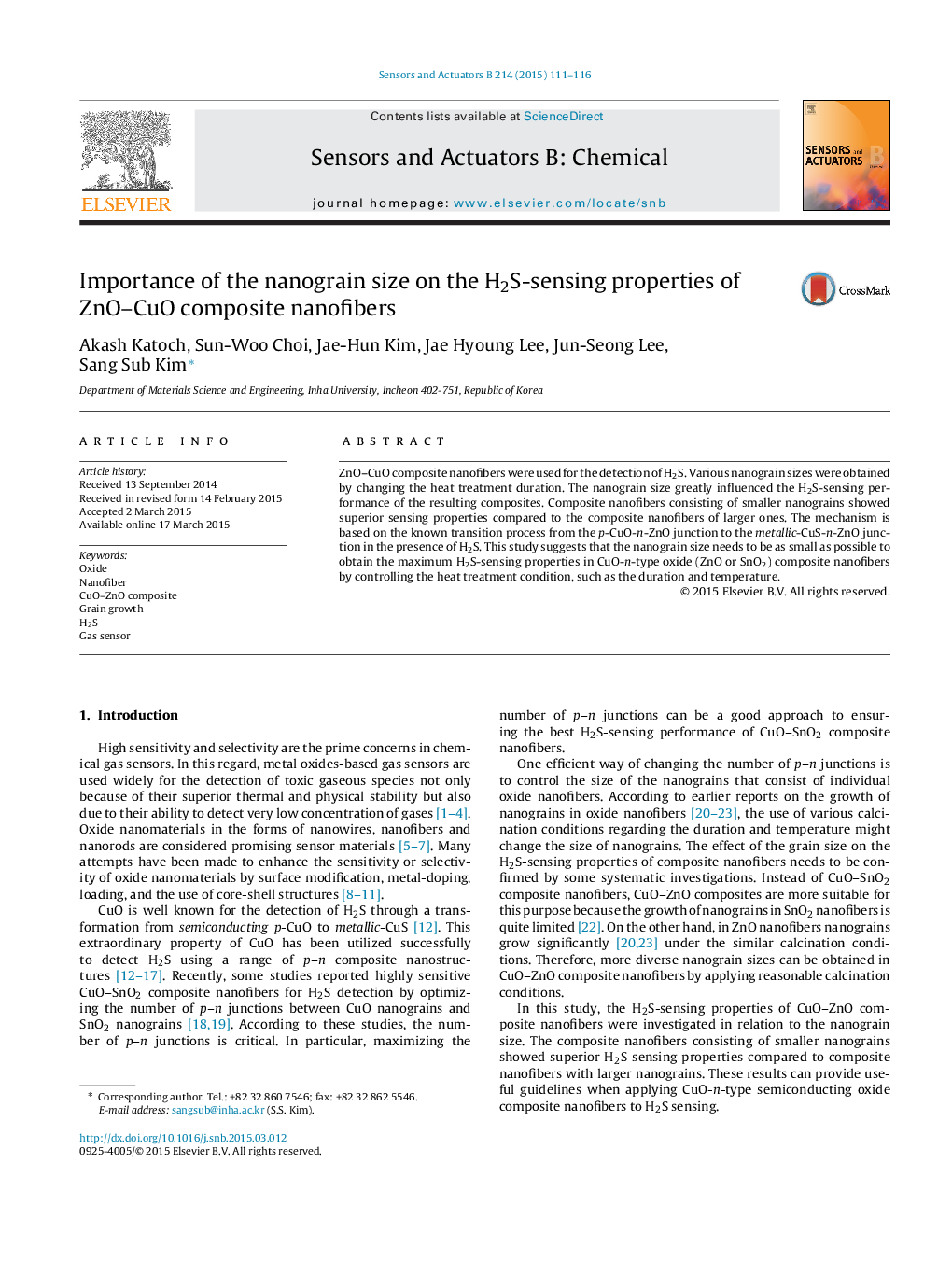| Article ID | Journal | Published Year | Pages | File Type |
|---|---|---|---|---|
| 741692 | Sensors and Actuators B: Chemical | 2015 | 6 Pages |
•CuO–ZnO composite nanofibers were synthesized by electrospinning technique.•Size of nanograins was changed under isothermal conditions.•Nanofibers with smaller nanograins showed superior H2S-sensing properties.•Formation of more p–n junctions is responsible for the superior sensing properties.
ZnO–CuO composite nanofibers were used for the detection of H2S. Various nanograin sizes were obtained by changing the heat treatment duration. The nanograin size greatly influenced the H2S-sensing performance of the resulting composites. Composite nanofibers consisting of smaller nanograins showed superior sensing properties compared to the composite nanofibers of larger ones. The mechanism is based on the known transition process from the p-CuO-n-ZnO junction to the metallic-CuS-n-ZnO junction in the presence of H2S. This study suggests that the nanograin size needs to be as small as possible to obtain the maximum H2S-sensing properties in CuO-n-type oxide (ZnO or SnO2) composite nanofibers by controlling the heat treatment condition, such as the duration and temperature.
